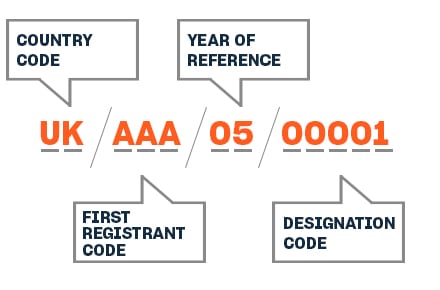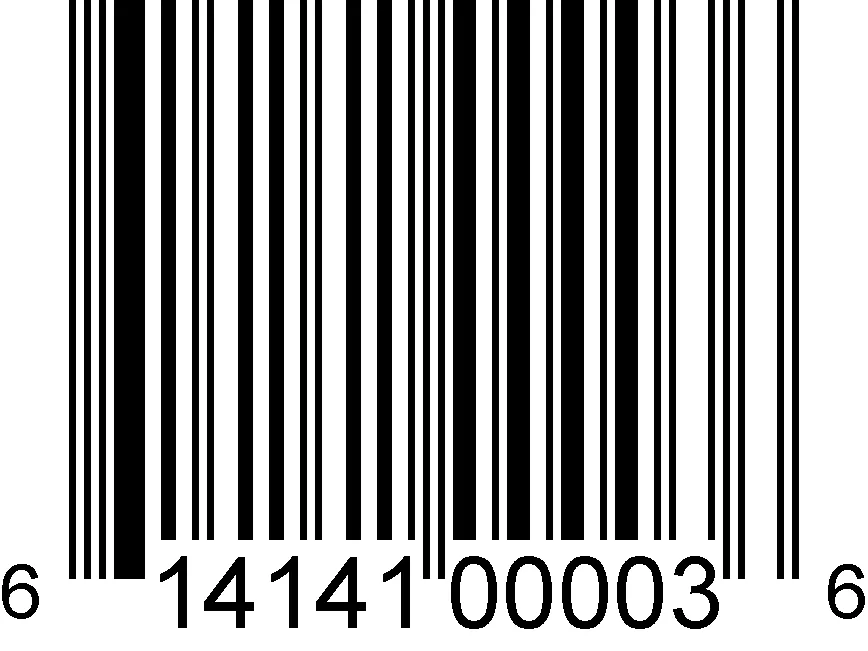Over the past two decades, the music industry has undergone a significant transformation. The era of purchasing CDs and vinyl has been largely replaced by online streaming platforms like Spotify, Apple Music, and Amazon Music. This shift has brought about many advantages but also posed challenges, necessitating a more efficient system for tracking songs. This is where ISRC (International Standard Recording Code) and UPC (Universal Product Code) come into play.
These codes aren’t just for identifying music. They ensure fair revenue distribution and accurate song play counts. As the industry becomes more data-driven, these codes offer crucial insights, helping artists and labels gauge song performance, audience engagement, and the effectiveness of marketing strategies.
Let’s delve deeper into how ISRC and UPC work.
What is an ISRC code?
ISRC, stands for “International Standard Recording Code“, might sound technical, but it’s vital in the music world. It’s like a fingerprint for every song. It makes sure each song is tracked correctly, no matter where or how it’s played.
At its core, ISRC is a system designed to meticulously track songs, making it an indispensable tool in the modern music industry. The importance of ISRC cannot be overstated; a single song can appear on multiple albums, playlists, or advertisements and can be played across various platforms in different countries. The ISRC code maintains the song’s unique identity amidst this complexity.
Understanding the ISRC Code Structure
An ISRC code is a 12-character identifier divided into four distinct parts: the country code, the registrant code, the year of registration, and a unique designation for the song. This structure ensures that each song is uniquely identified, regardless of its origin or the year it was produced.
For instance, an example ISRC code might look like: ISRC AA-6Q7-20-00047. However, this is a fictional code used for illustrative purposes.
The ‘Year of Reference‘ indicates the year the ISRC is assigned, which might differ from the actual year of recording. This element ensures that codes from previous years aren’t accidentally reused.
The ‘Designation Code’ is a set of five digits chosen by the registrant. When a new Prefix Code (Country and Registrant codes) is allocated, it comes with a range of Designation Codes. It’s crucial for registrants to only use codes from their allocated range.

Standard ISRC Code Format. Image Source: PPL UK
Why ISRC is Important for Streaming and Playlists
Imagine releasing a song and it becomes popular. It’s played by thousands, added to big playlists, and even played on radio stations around the world. Now, imagine not getting paid for any of this because your song wasn’t tracked right. That’s what ISRC codes prevent.
Every time a song is played on sites like Spotify or Apple Music, its ISRC code is noted. This makes sure artists get paid fairly, even if their song is played millions of times worldwide.

ISRC vs. Copyright: What's the Difference?
At first glance, ISRC and copyright might seem like interchangeable terms, especially to those new to the music industry. However, they serve distinct purposes and play unique roles in the world of music.
ISRC: The Tracker
ISRC, is primarily about tracking. Think of it as a digital fingerprint for every audio or music video recording. Each ISRC is a unique code assigned to individual tracks, allowing for precise tracking of sales, streams, and broadcasts. This system ensures that artists, producers, and record labels can monitor where and how often a track is played, be it on the radio, streaming platforms, or even TV.
Copyright: The Protector
On the other hand, copyright is all about ownership and control. It’s a legal right granted to the creator of an original work, giving them exclusive rights to reproduce, distribute, perform, and adapt their creation. In the context of music, this means that the artist or the copyright holder has the sole authority to decide who can use or distribute their music and in what manner.
The Synergy Between ISRC and Copyright
While they serve different primary functions, ISRC and copyright often intersect in their mission to protect artists and their creations. The precise tracking capability of the ISRC system is a boon to copyright protection. By monitoring every play or use of a song, ISRC ensures that any unauthorised or unlicensed uses are detected promptly. This swift detection allows artists and copyright holders to take necessary actions, ensuring they receive due credit and compensation for their work.
In essence, while ISRC helps in the accurate tracking and reporting of music plays, copyright ensures the legal protection of the artist’s intellectual property. Together, they form a robust framework that safeguards the rights and interests of music creators in the digital age.
UPC codes in Music
While ISRC codes are for individual songs, UPC (Universal Product Code) is for whole albums or collections. It makes sure they stand out in the big online music world.
What's a UPC?
UPC was first made for all kinds of products. But as music moved online, albums needed their own unique code. Whether it’s a single song, short album (EP), or a full album, each one needs a UPC to stand out online.
A UPC code has 12 numbers. Each part of the number gives specific info about the music. This makes sure every album is unique, even if different artists have albums with the same name.

A UPC isn’t just a string of numbers. It can be turned into a barcode, a visual representation that’s scanned at stores. For independent musicians selling physical albums, this barcode can be a game-changer. It not only tracks sales but also gives the album a professional touch. There are tools available that can convert your UPC into a barcode, ready to be printed on your album cover.
Why UPC Matters Now
With fewer people buying physical albums and more people buying digital music, UPC is more important than ever. Sites like iTunes, Amazon Music, and even online stores selling CDs or vinyl rely on UPC codes to manage their music.
For artists, especially those on their own, having a UPC means they can reach more people. It lets their albums be on big sites and be heard by people all over the world.
UPC vs. ISRC: What's Different?
UPC and ISRC codes are both important in music, but they have different jobs. ISRC is for individual songs. UPC is for whole albums.
This difference is key. For example, an album with ten songs will have one UPC code but ten different ISRC codes. This makes sure the whole album and each song on it are tracked correctly.
Getting ISRC and UPC Codes
For artists with a music label, it’s usually simple. Labels know these codes are important and often handle it. But independent artists have many ways to get these codes.
Many online music platforms, like DistroKid, TuneCore, and CDBaby, give UPC and ISRC codes as part of their service. They make it easy for artists to get the codes they need.
Steps to Get an ISRC Code for Your Tracks
- Determine the need: Every distinct recording mandates its own ISRC. It’s crucial to understand that different renditions of the same track, whether they are live performances, acoustic interpretations, remixes, or any other variation, each require a separate ISRC. This granularity ensures accurate tracking and reporting of each version.
- Select a registration agency: While the Recording Industry Association of America (RIAA) stands as the predominant agency for ISRC allocation in the United States, it’s essential to recognise that each country typically has its designated agency for this purpose. Globally, there’s a vast network of such agencies catering to the diverse needs of the music industry. For those interested in obtaining a comprehensive list of Country Agencies to apply for these codes, you can click here to access the full PDF list.
Simplified process for independent artists: For independent artists, especially those self-releasing their music, navigating the intricacies of the music industry can be daunting. Digital distribution platforms have recognised this challenge and integrated ISRC generation into their services. This integration means that when an artist is ready to release a track, the platform can automatically generate and assign an ISRC, eliminating the need for a separate registration process.
- Registration: Depending on the chosen agency or platform, artists will need to provide details about the track, including its name, duration, and version details.
- Receive the ISRC: Post-registration, artists receive the ISRC for their track, ensuring it’s ready for global distribution and accurate tracking.
Steps to Get a UPC Code for your album
- Determine the need: Before diving in, artists should determine if they need a new UPC. If it’s a fresh release, the answer is yes. However, for re-releases or slight modifications of existing albums, using the original UPC might be more appropriate.
- Choose a provider: While there are many providers, like GS1, that offer UPC codes, artists should also consider digital distribution platforms. These platforms frequently combine UPC code generation with their distribution services, providing an all-in-one solution.
- Registration and payment: Depending on the chosen provider, artists might need to register, provide relevant details about the release, and pay any associated fees.
- Receive the UPC: Once registered and paid, artists receive their unique UPC code, ready to be embedded into their release for global distribution.
What Does It Cost to Get ISRC and UPC Codes?
While these codes are crucial, they aren’t always free. Costs can vary. Some agencies might offer them as part of a package, while others might charge. For example, getting a UPC from GS1 might have a fee. However, many music distribution services, understanding the needs of indie artists, include these codes in their services, often without extra charges. It’s essential to research and find what fits your budget and needs.
Common Mistakes with ISRC and UPC Codes
With ISRC and UPC codes being technical, mistakes can happen. It’s important for artists to know the common ones so they can avoid them.
- Using the same ISRC for different songs: Every song should have its unique ISRC. Even if it’s a remix or a live version, it needs its own code. Using the same code for different tracks can cause confusion and payment issues.
- Not updating ISRC for re-releases: If you’re re-releasing a song, it’s tempting to use the old ISRC. But if there are any changes, like a remaster, it should get a new ISRC.
- Mixing up ISRC and UPC: Remember, ISRC is for individual songs, and UPC is for albums or collections. Don’t use an album’s UPC as a song’s ISRC or vice versa.
- Skipping the UPC for digital singles: Even if you’re releasing just one song, it still needs a UPC. This ensures it’s recognised on platforms like Apple Music or Amazon Music.
- Not keeping a record: Always keep a record of your ISRC and UPC codes. If there are any issues, like a song not getting paid for streams, you’ll need these codes to sort it out.
Conclusion
In summary, the advent of digital music streaming has made ISRC and UPC codes more crucial than ever. These codes serve as the digital fingerprints for songs and albums, ensuring accurate tracking and fair revenue distribution. ISRC codes uniquely identify individual tracks, while UPC codes do the same for entire albums or collections. Both are vital for artists and labels in a data-driven music industry, helping them navigate complexities like copyright and global distribution. Understanding and properly utilising these codes can make a significant difference in an artist’s success, making them indispensable tools in today’s digital music landscape.
